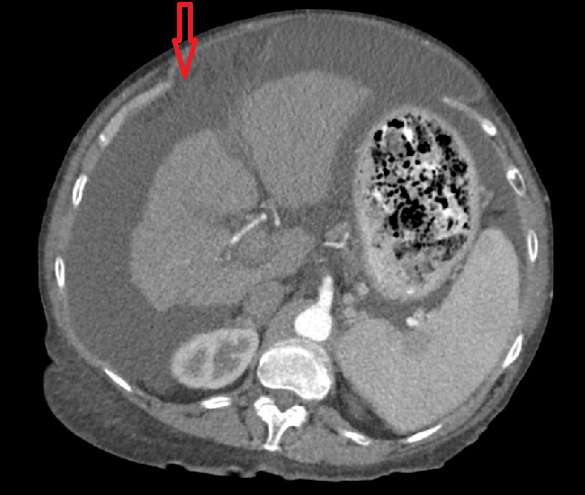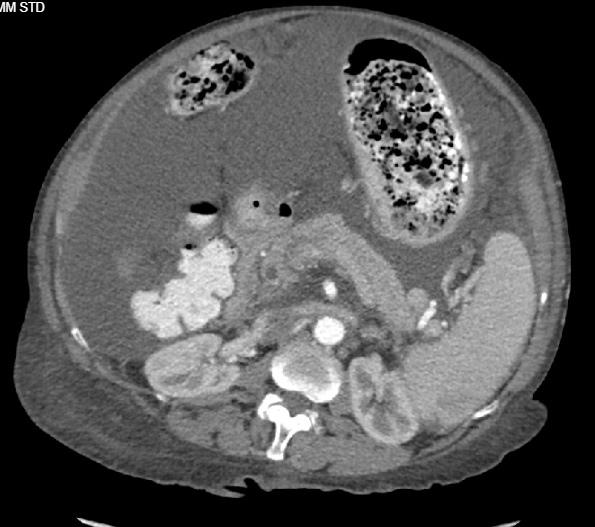Tuesday Poster Session
Category: Liver
P6135 - Myxedema Coma, an Initial Presenting Symptom of Hypothyroidism, Secondary to End-Stage Liver Disease
Tuesday, October 28, 2025
10:30 AM - 4:00 PM PDT
Location: Exhibit Hall

Bishoy Boulus Elkoumes, MD (he/him/his)
NYC Health + Hospitals/South Brooklyn Health
Brooklyn, NY
Presenting Author(s)
Bishoy Boulus Elkoumes, MD1, Amr Ibrahim, MD1, Joshua Diaz, MD2, Michael Bernstein, MD1
1NYC Health + Hospitals/South Brooklyn Health, Brooklyn, NY; 2South brooklyn Health, Brooklyn, NY
Introduction: Myxedema coma is a rare but life-threatening disease. The term coma might be misleading, as patients rarely do present with coma. The typical symptoms start with lethargy progressing to stupor and, finally, to coma associated with acute respiratory failure and hypothermia. 80% of patients affected are females > 60 years old. To add, it is extremely rare for myxedema coma to be the initial presentation of undiagnosed hypothyroidism.
Case Description/
Methods: A 73-year-old female with a complex medical history of hypertension, type 2 Diabetes Mellitus, alcohol induced end-stage liver disease (ESLD), with recurrent ascites (treated by multiple paracentesis). She presented to the hospital with shortness of breath and lethargy. Abdominal exam showed severe distention. Laboratory findings revealed new-onset hypothyroidism, with a markedly elevated TSH of 16 uIU/mL (normal 0.27-4.2 uIU/mL), T3: 57 ng/dL, T4 of 0.6 ng/dL, MELD-Na score of 15 and normal ammonia level. Her myxedema score was 25, indicating probable myxedema coma. Thyroid peroxidase antibodies were negative. Additionally, her thyroxine-binding globulin (TBG) was low at 5 ug/mL (Ref Range: 13-39 ug/mL). She was treated with hydrocortisone and levothyroxine, leading to normalization of TSH, T3 and T4 levels. Decreased TBG caused by ESLD likely contributed to the hypothyroid state.
Discussion:

Figure: Image 1: CT Abdomen showing moderate to large ascites, and heterogeneous enhancement of the liver.

Figure: Image 1: CT Abdomen showing moderate to large ascites.
Disclosures:
Bishoy Boulus Elkoumes indicated no relevant financial relationships.
Amr Ibrahim indicated no relevant financial relationships.
Joshua Diaz indicated no relevant financial relationships.
Michael Bernstein indicated no relevant financial relationships.
Bishoy Boulus Elkoumes, MD1, Amr Ibrahim, MD1, Joshua Diaz, MD2, Michael Bernstein, MD1. P6135 - Myxedema Coma, an Initial Presenting Symptom of Hypothyroidism, Secondary to End-Stage Liver Disease, ACG 2025 Annual Scientific Meeting Abstracts. Phoenix, AZ: American College of Gastroenterology.
1NYC Health + Hospitals/South Brooklyn Health, Brooklyn, NY; 2South brooklyn Health, Brooklyn, NY
Introduction: Myxedema coma is a rare but life-threatening disease. The term coma might be misleading, as patients rarely do present with coma. The typical symptoms start with lethargy progressing to stupor and, finally, to coma associated with acute respiratory failure and hypothermia. 80% of patients affected are females > 60 years old. To add, it is extremely rare for myxedema coma to be the initial presentation of undiagnosed hypothyroidism.
Case Description/
Methods: A 73-year-old female with a complex medical history of hypertension, type 2 Diabetes Mellitus, alcohol induced end-stage liver disease (ESLD), with recurrent ascites (treated by multiple paracentesis). She presented to the hospital with shortness of breath and lethargy. Abdominal exam showed severe distention. Laboratory findings revealed new-onset hypothyroidism, with a markedly elevated TSH of 16 uIU/mL (normal 0.27-4.2 uIU/mL), T3: 57 ng/dL, T4 of 0.6 ng/dL, MELD-Na score of 15 and normal ammonia level. Her myxedema score was 25, indicating probable myxedema coma. Thyroid peroxidase antibodies were negative. Additionally, her thyroxine-binding globulin (TBG) was low at 5 ug/mL (Ref Range: 13-39 ug/mL). She was treated with hydrocortisone and levothyroxine, leading to normalization of TSH, T3 and T4 levels. Decreased TBG caused by ESLD likely contributed to the hypothyroid state.
Discussion:

Figure: Image 1: CT Abdomen showing moderate to large ascites, and heterogeneous enhancement of the liver.

Figure: Image 1: CT Abdomen showing moderate to large ascites.
Disclosures:
Bishoy Boulus Elkoumes indicated no relevant financial relationships.
Amr Ibrahim indicated no relevant financial relationships.
Joshua Diaz indicated no relevant financial relationships.
Michael Bernstein indicated no relevant financial relationships.
Bishoy Boulus Elkoumes, MD1, Amr Ibrahim, MD1, Joshua Diaz, MD2, Michael Bernstein, MD1. P6135 - Myxedema Coma, an Initial Presenting Symptom of Hypothyroidism, Secondary to End-Stage Liver Disease, ACG 2025 Annual Scientific Meeting Abstracts. Phoenix, AZ: American College of Gastroenterology.

